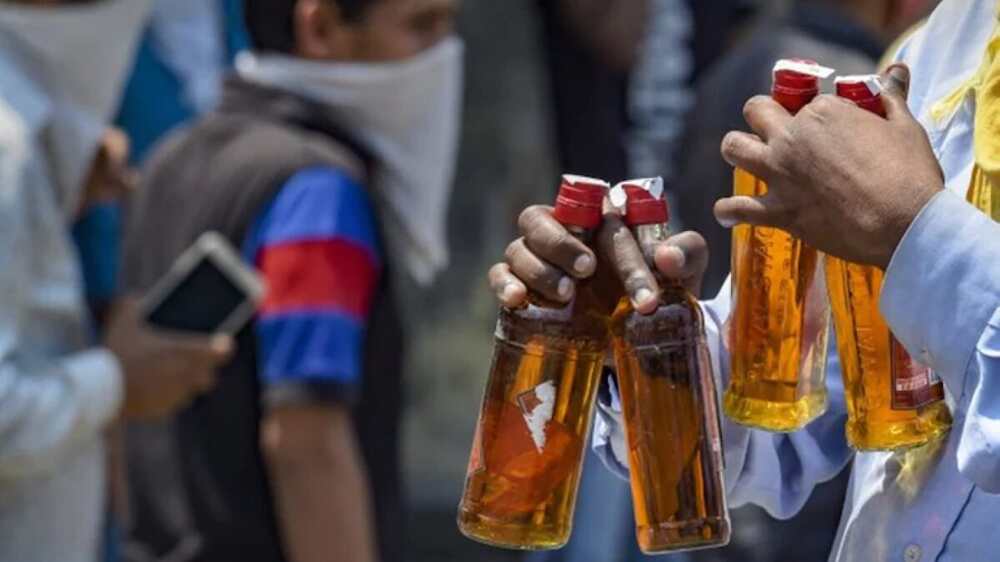A flawed policy?

The Bihar government is currently finding itself in a mess, where even its own allies are demanding a review of the liquor ban policy of the state. Five years down the line since the Nitish government passed one of the most stringent alcohol consumption laws in the country, the tragedy in Bihar has come to haunt the conscience of people as around 35 people have been killed in several districts of the state due to consumption of low-quality alcohol. Though very unfortunate, the Bihar hooch tragedy reflects only the flashpoint of the problem. A no less intense tragedy has been unfolding within the state over the past five years in the form of a bootlegger economy — hitting the poor the most and depriving the state of the superfluous revenue it used to earn in the pre-ban period. Numerous news reports and analyses have borne testimony to the flourishing illegal economy on account of liquor trade in the state. Now this problem is not restricted to Bihar only. In fact, Bihar's failure story appears to be a mere repetition of that of other states like Gujarat, Haryana, Mizoram, Nagaland and Lakshadweep. Bihar certainly has failed to learn a lesson from the past experiences of other states. The case of the state is now itself a subject of study, from which other states intending to go for similar measures can learn. Bihar government's experiment can safely be termed as a failed initiative as it could not achieve its prime objective of eliminating the evil of liquor consumption in the state half a decade since its inception. Though the incidences of domestic violence against women In Bihar has fell since the imposition of the ban, it is not certain whether it is linked to the ban or not. As reported by the Indiaspend in October 2020, cases of domestic violence under Section 498A of the Indian Penal Code (cruelty by the husband or his relatives) had fallen 37 per cent since the ban, while the crime rate against women fell 45 per cent. Countrywide, during the same period, cases rose 12 per cent and the crime rate rose three per cent. In any case, the fact remains that liquor consumption in the state continues to thrive in an economy that is not on records, that leaves almost no data — making it hard to be curbed. To have a rough glimpse of this economy, its supply side can be split in two parts — one, the liquor coming through illegal imports from neighboring states, and two, low-cost hooch manufactured locally within homes and at the village / town outskirts. On the demand side, it must be understood that to many consumers, alcohol is neither a necessary commodity nor a luxury. Its demand stems from addiction which is very complex to curb. Since the supply side may be dotted with a large number of powerful intermediaries, who would bypass legal barriers — thus claiming their own profit margins — the price of the alcohol naturally multiplies several times. At the same time, amid increased prices and constrained supplies, demand for alcohol remains very less deterred. In general, if a dividing line is drawn to demarcate those who can afford alcohol in this bootlegger economy and those who can't, it may give some idea as to how the consumption pattern and pocket burden of the consumers is impacted after the ban. Since alcohol consumption is mostly an addiction, it is very likely that people will go for alcohol to the maximum extent possible. So, the low-income consumers would probably consume low-quality harmful alcohol while paying more. While those who can well-afford alcohol consumption would continue their routine consumption, again after paying extra price. It can be summed up that a blanket ban on alcohol forces low-income people to consume harmful alcohol and well-off consumers to pay more for their routine consumption. This high-price addiction commodity is a lucrative option for middle men who have usurped the revenue options that earlier rested with the government. It must be noted here that Nitish Kumar is the same leader who, in his early days as Bihar CM in 2006, openly liberalised the state's liquor economy. The revenue collections for the state from Indian-made foreign liquor soared from Rs 87 crore in 2005-06 to Rs 1,777 crore in 2014-15 — just a couple of years ahead of the ban. In fact, as per the Economic Survey of India, Bihar is reported to have earned Rs 3,100 crore from excise duty on liquor in 2014-15. Now, if alcohol consumption in the state reportedly continues to exist despite the ban, where is the revenue going? It is apparently clear that intermediaries and neighboring states from where liquor is allegedly imported may be dividing these shares. It is perhaps a time when the Bihar government should look forward to revisiting its liquor ban policy. While its intent may have been clear at the time of formulating the policy, and its action may even have yielded certain positive dividends, it is clear that there have been serious negative fallouts. Laws and policies are of dynamic nature and these must keep evolving.



